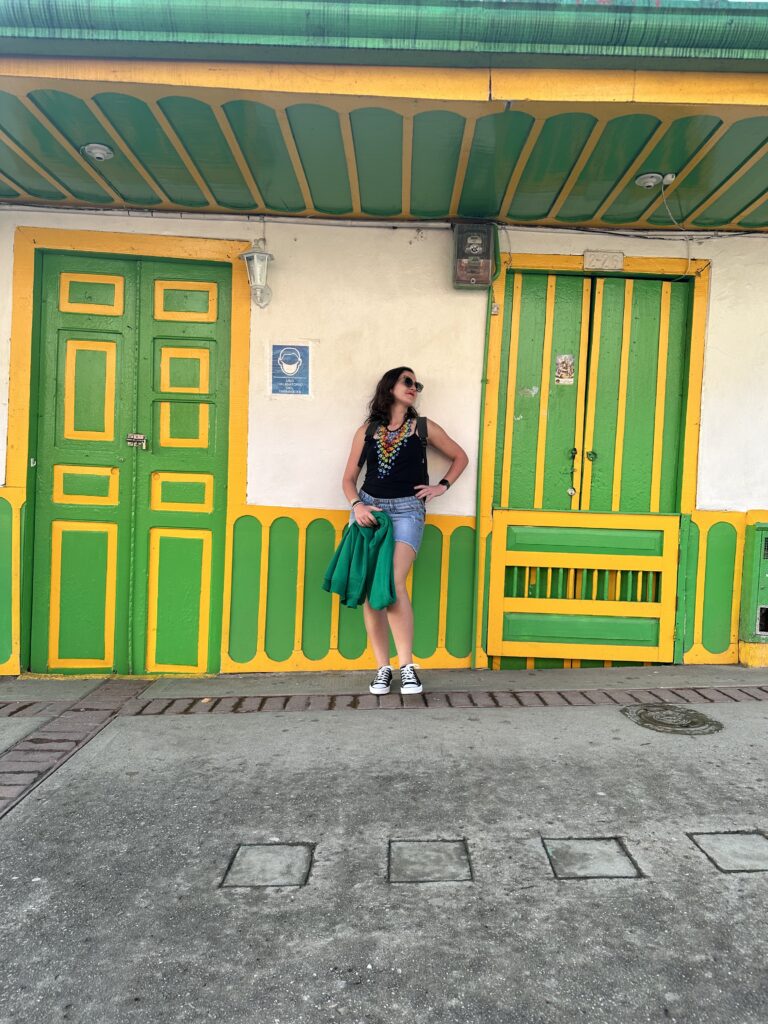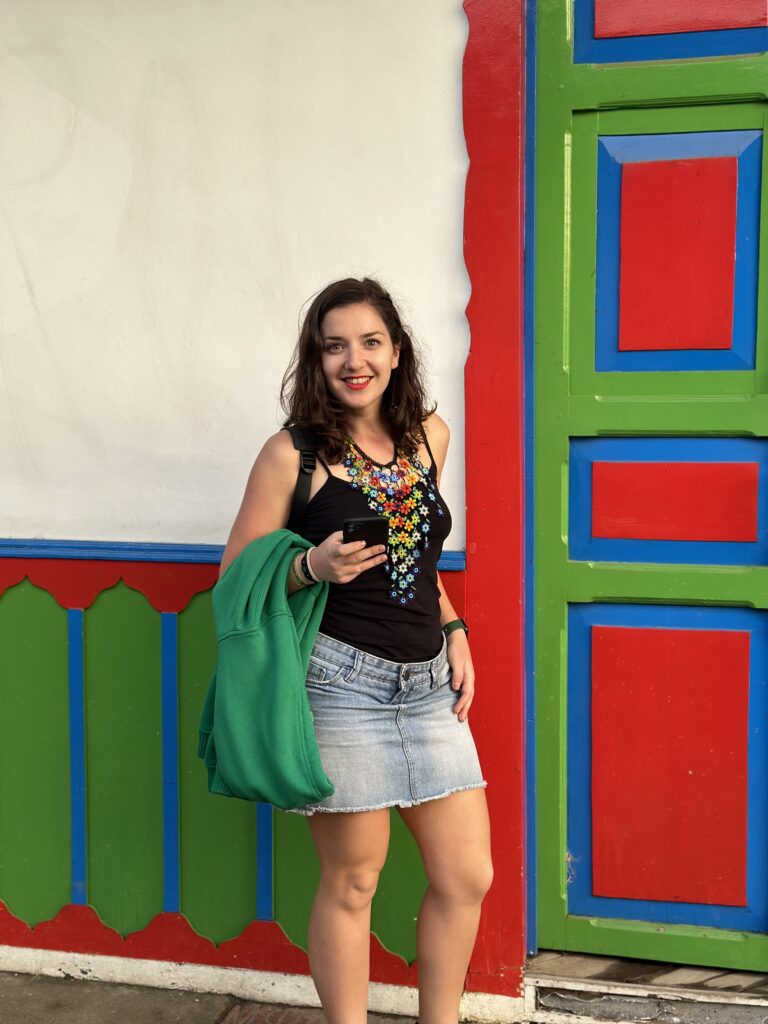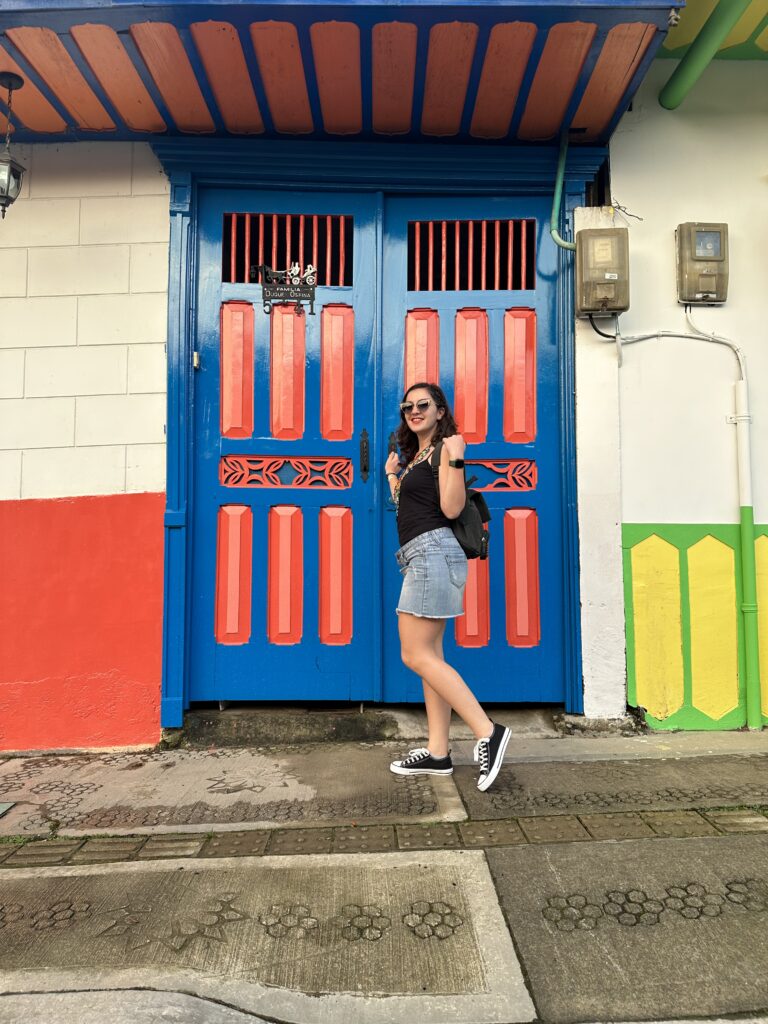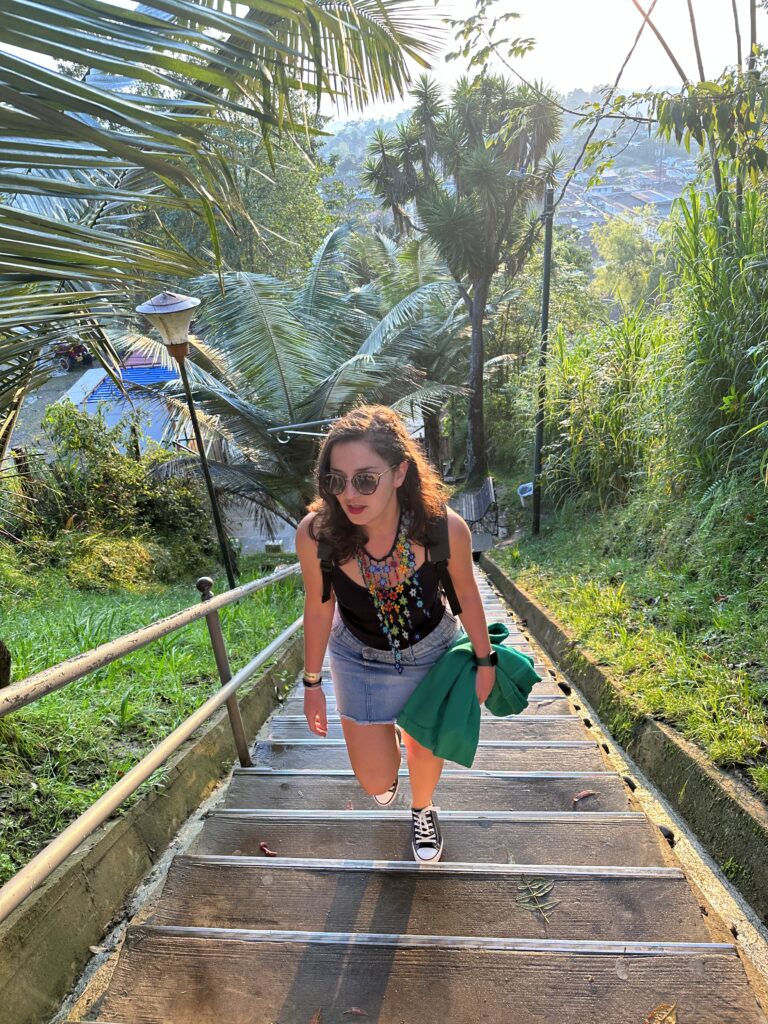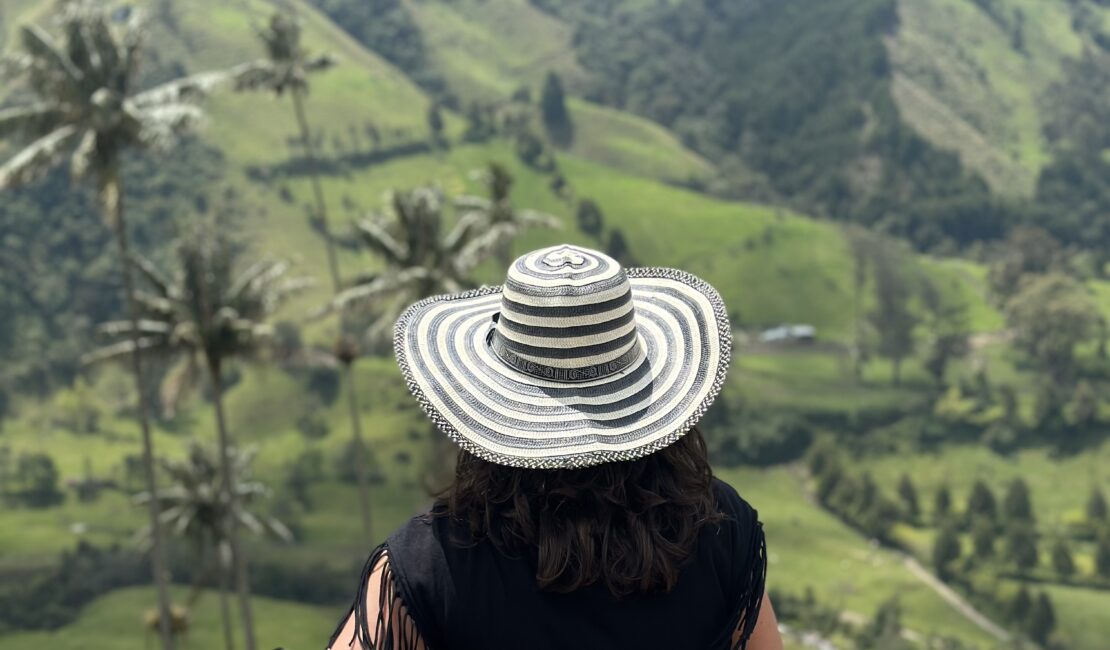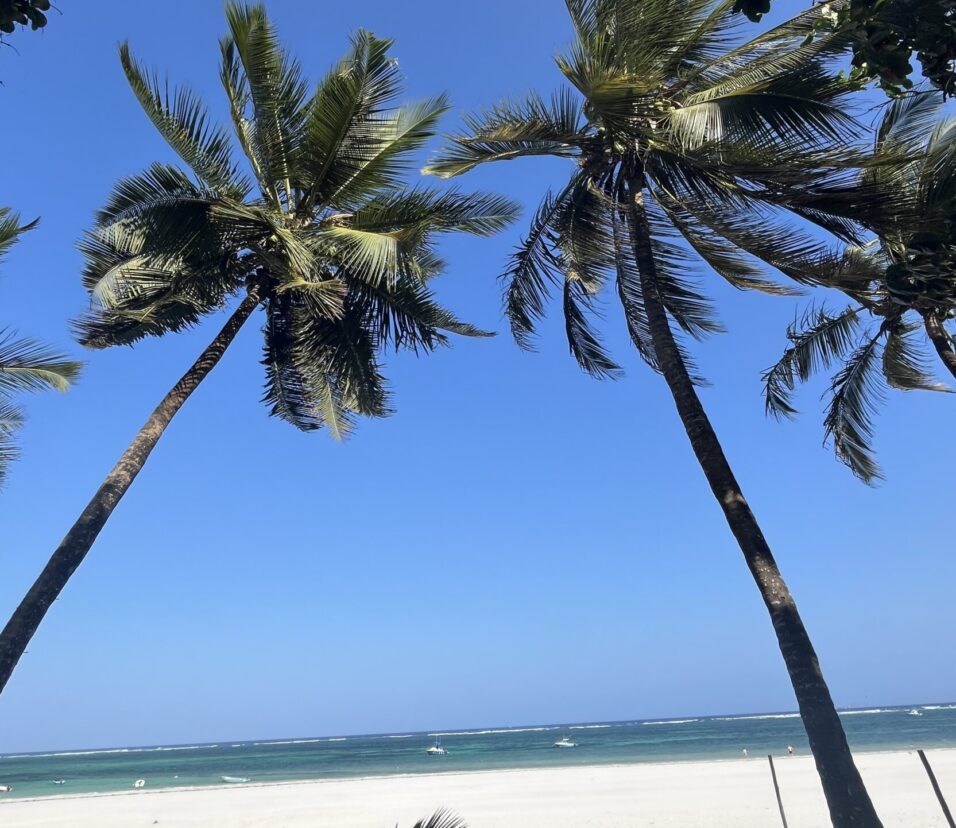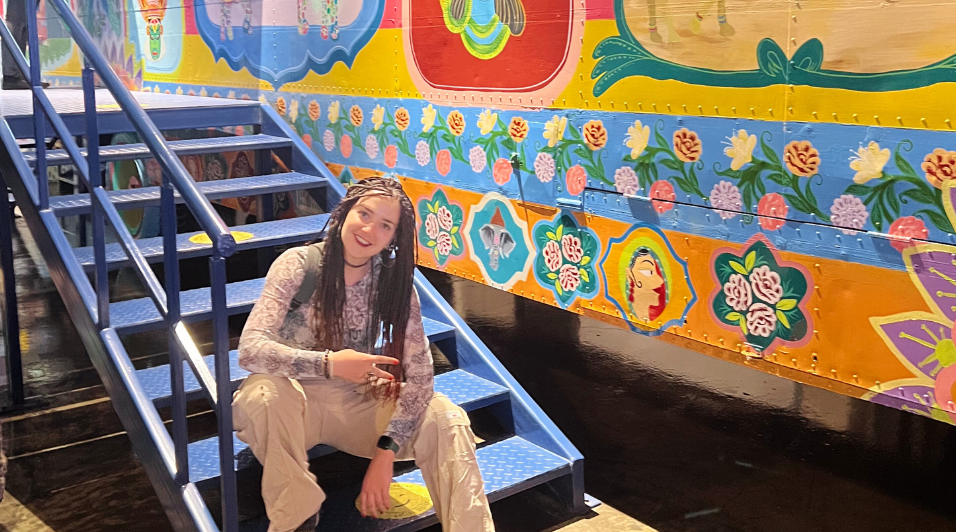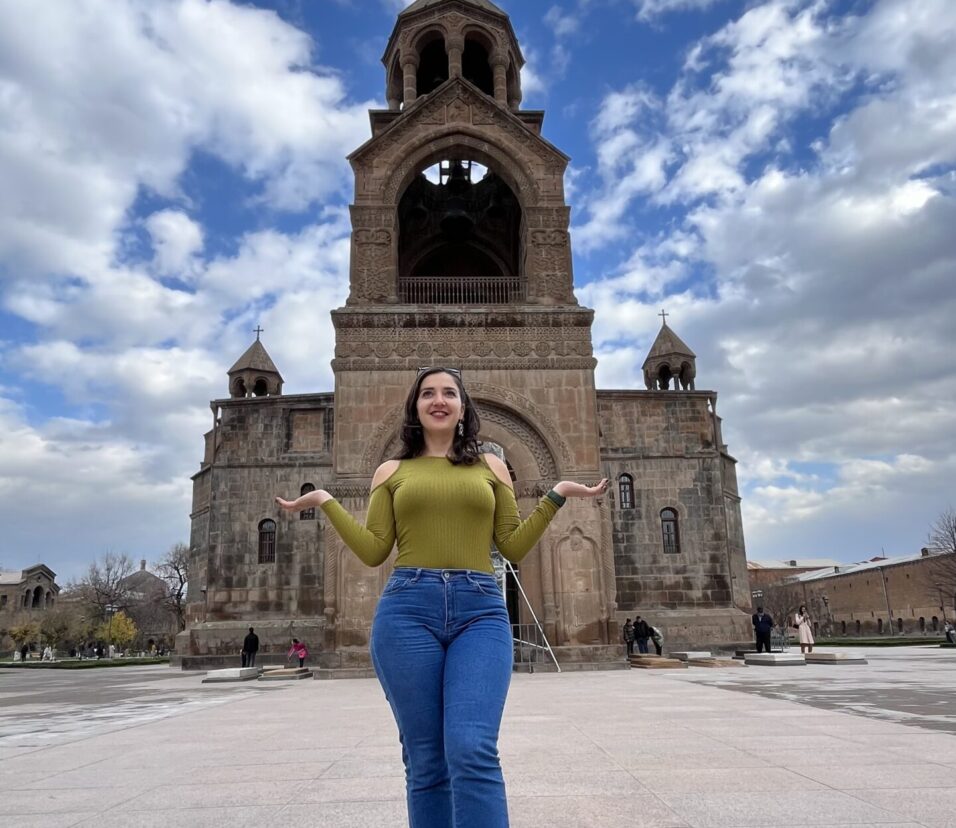After Bogotá, our Colombian adventure led us to the charming and tourist-popular town of Salento, a destination that truly exceeded our expectations. Our journey commenced with a bus ride from Bogota to Pereira, a trip that took around 7 hours, although the constant roadwork made it hard to keep track of time. An unexpected occurrence during one of our stops was the appearance of a Ranger-looking policeman, accompanied by an adorable Golden Retriever, for a routine inspection. Little did we know that this seemingly random inspection would soon reveal its significance.
The hotels were slightly pricier in Salento, due to tourist hight demand. Upon reaching Salento, we were greeted by the incredibly accommodating staff at our hotel. They arranged a car to pick us up from the bus station at 10 pm for a one-hour drive to Salento. Due to the delays on the road, the driver had to patiently wait for us for almost an hour, displaying remarkable understanding. It was a late-night arrival in Pereira, and the bus station at 11:00 pm had a slightly sketchy vibe, urging us to exercise caution.
Our hotel, despite the late hour, went above and beyond to accommodate us, ensuring we felt welcome. Eager to experience the small town, we embarked on a nighttime stroll through Salento’s enchanting center.
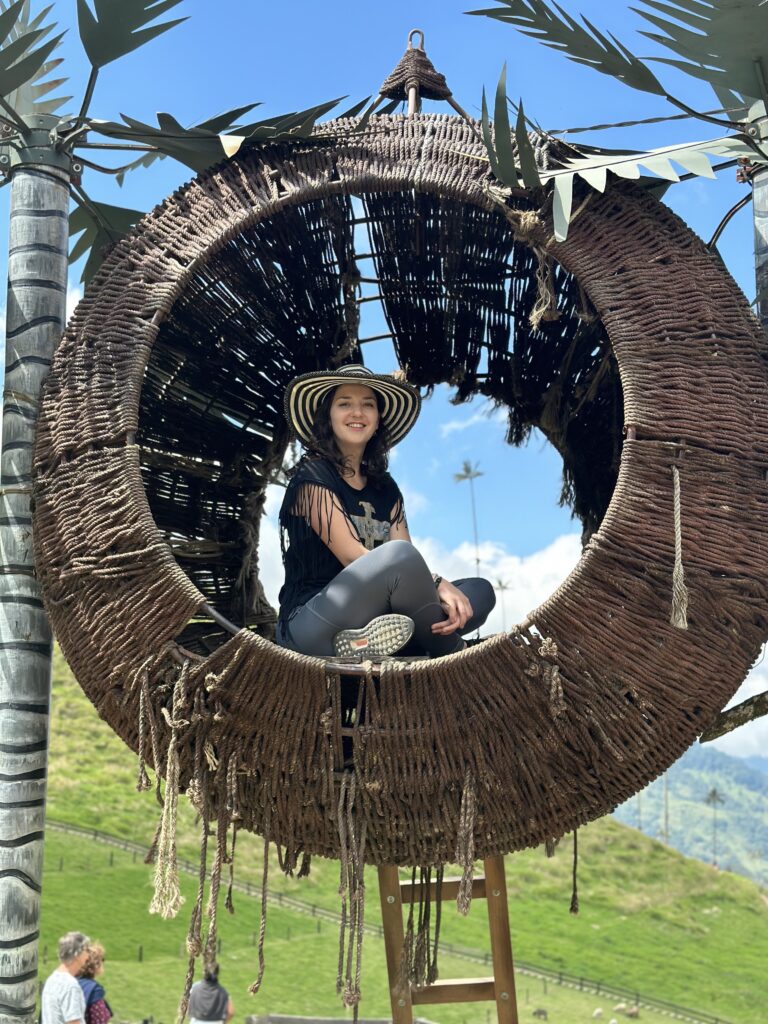


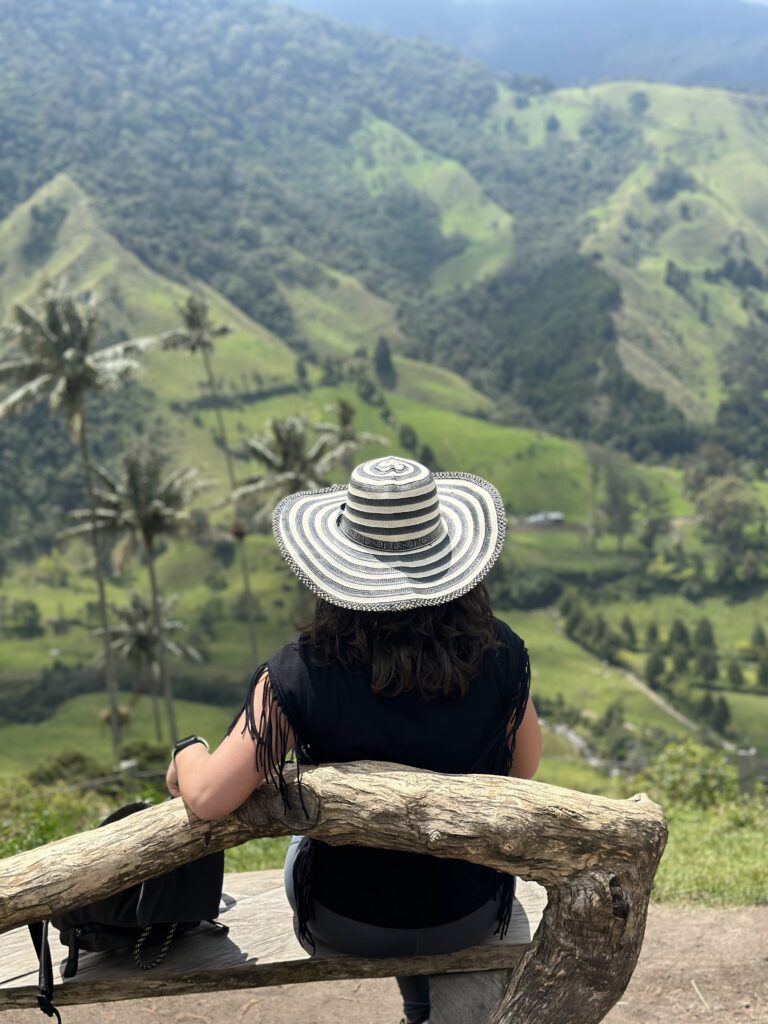
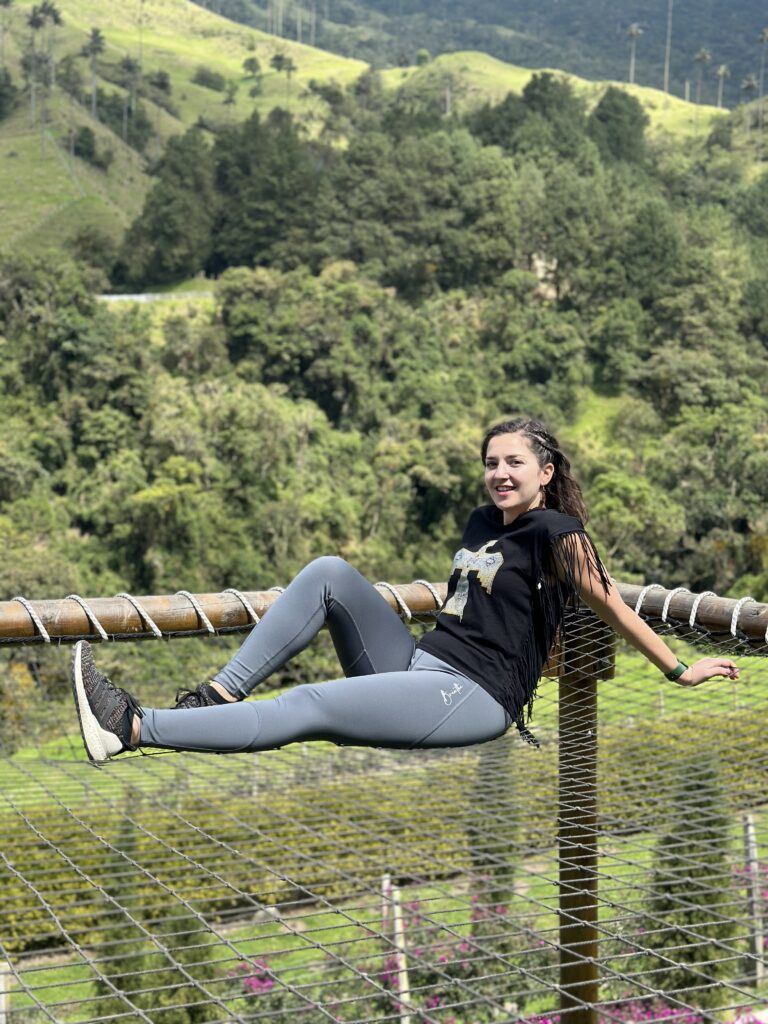
Cocora Valley left us in awe. Our passionate guide, a bird enthusiast, added a unique dimension to our exploration as we hiked amidst the captivating palm trees and hills close to the forest. We also engaged in some birdwatching and learned about the illegal trade of endangered species, which was the reason behind the earlier bus inspection. In Cocora Valley, the emphasis was on minimal environmental impact. They not only refrained from cutting palm trees but also left dead trees and natural tree flower parasites untouched, allowing nature to take its course. Words alone can’t capture the magic of this place — you just have to be there.
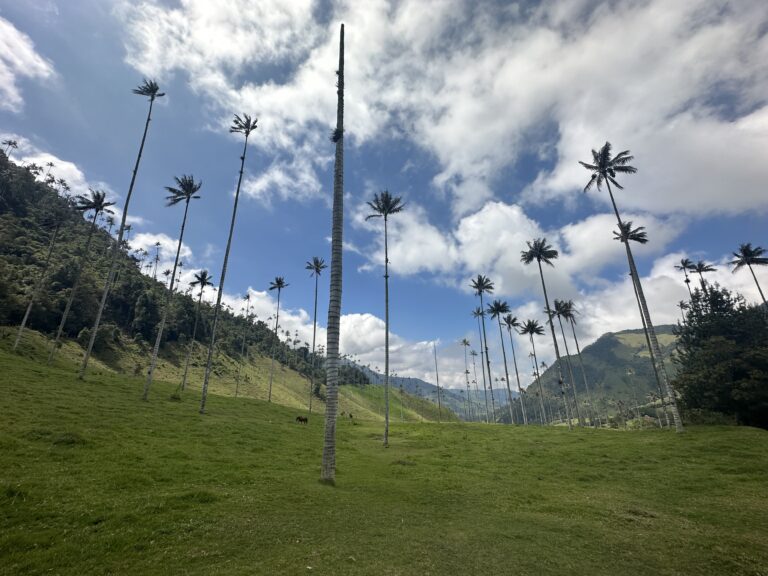
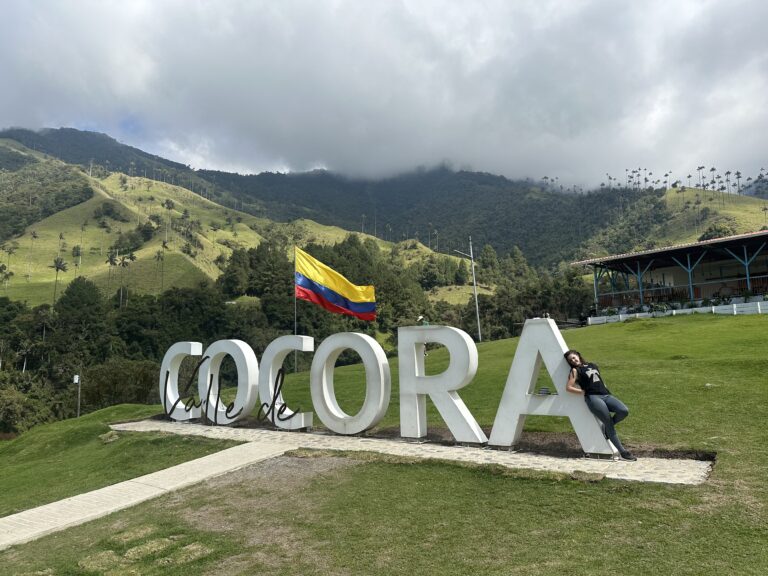

Following Cocora, our driver took us to a local guesthouse for a traditional, mouth-watering lunch with a grandiose panoramic view. The next stop was the Coffee Farm, Finca de Buenos Aires, where we got to dress up as coffee gatherers and gain insights into the complicated process of growing first-class organic Arabica coffee. It’s essential for the coffee beans to be fully coloured, without a trace of green, to meet the quality standards, no mini-mangos allowed. We even learned the meticulous Japanese technique for making coffee, where water temperature had to be precisely 92 degrees Celsius to preserve the flavour. Notably, this premium coffee was primarily destined for export, particularly to Italy. The coffee you find in local Colombian bars and coffee shops is known as Pasilla, defined as the by-products of coffee processing, often containing defective or low-screen size beans, by Andrade (2022).
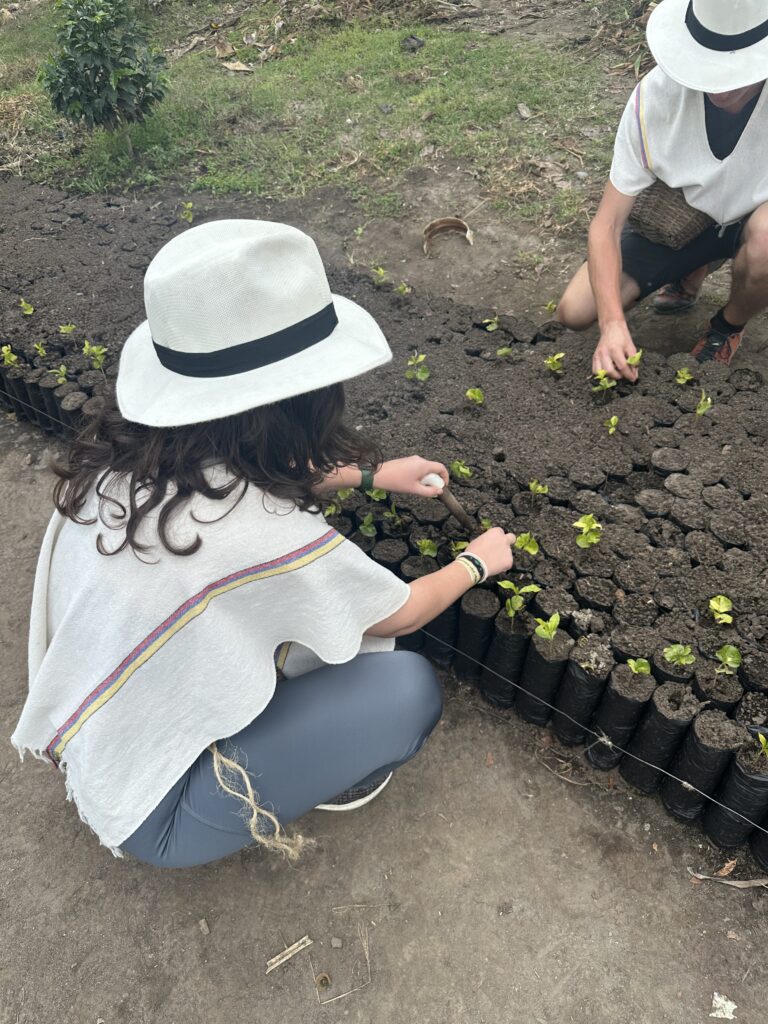
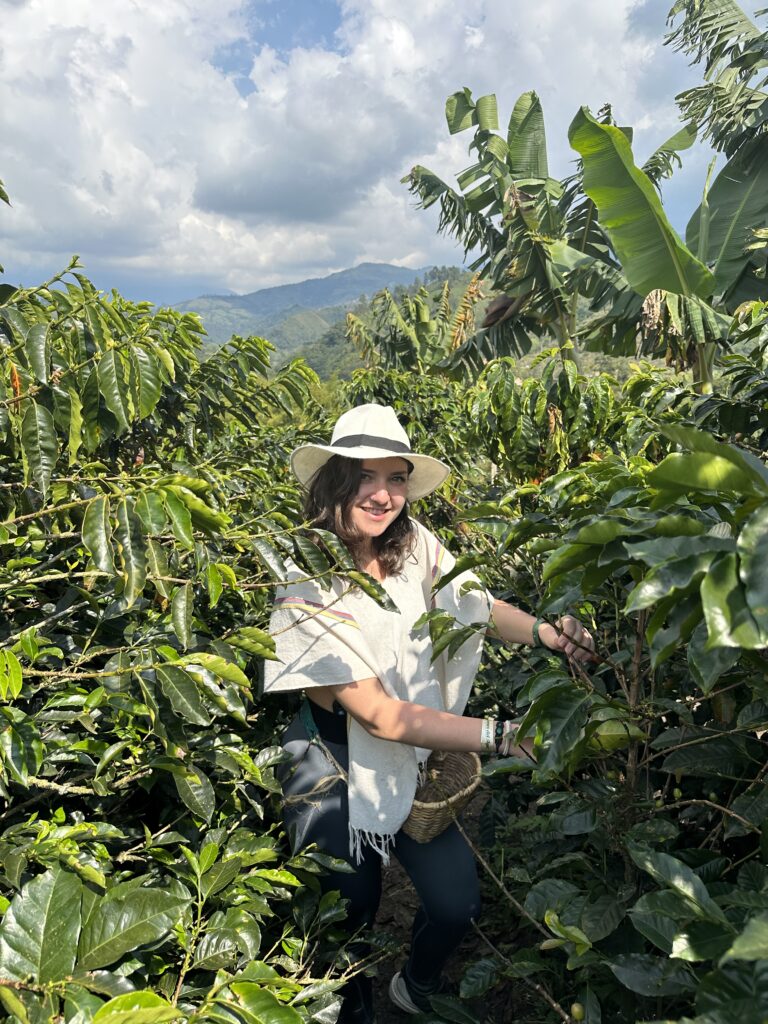
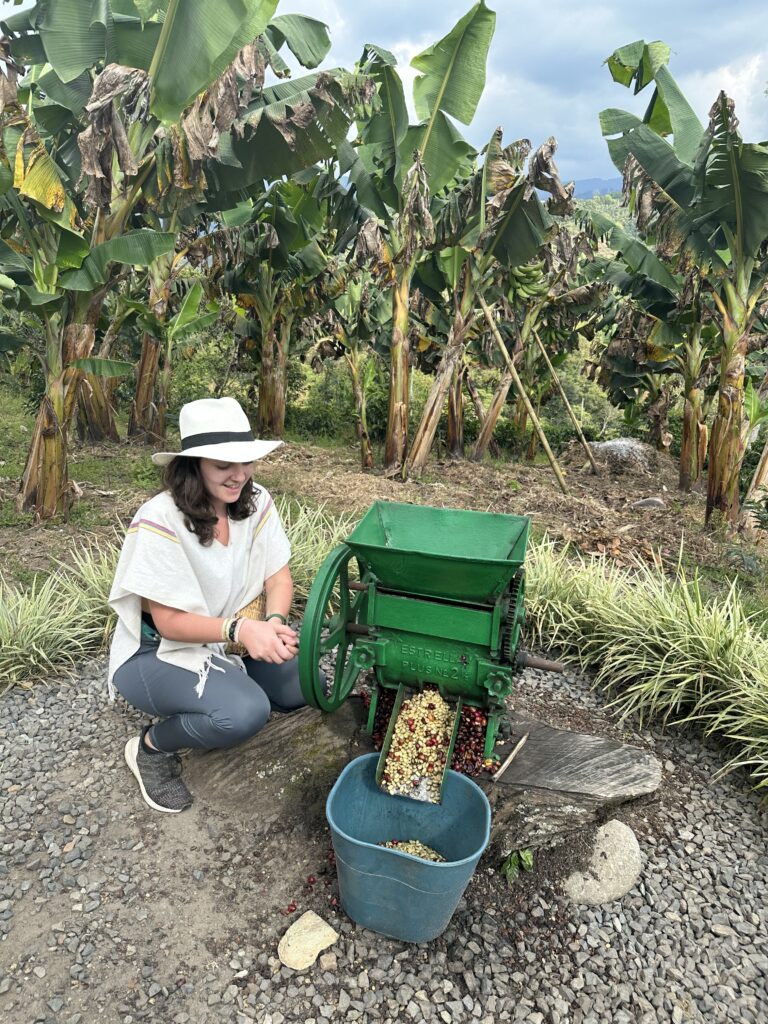
After the tour, we returned to the vibrant town, now bustling with tourists, cultural experiences, and music. We explored the colourful local souvenir shops and later climbed the stairs in the southwest part of town to witness a stunning sunset, marking the conclusion of our unforgettable Salento experience. The following day, we embarked on a car journey back to Pereira to catch our bus to Medellin, cherishing the memories of this Colombian town.
